#wilhelm voigt
Explore tagged Tumblr posts
Text
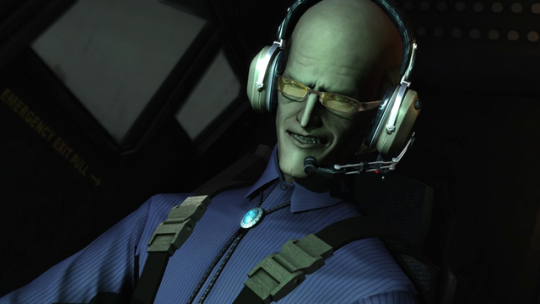
#mgrr#metal gear rising#metal gear rising revengeance#mgr doktor#doktor mgr#wilhelm voigt#mgs#mgs queer poll
3 notes
·
View notes
Text
Wilhelm Voigt, a 57-Year-old German Shoemaker, Masquerades as an Army Captain and Directs a Whole Platoon of Soldiers to Aid Him in Stealing 4,000 Marks. October 17, 1906
Image: Wilhelm Voigt in 1910. (Public Domain) On this day in history, October 17, 1906, Wilhelm Voigt, a 57-year-old German shoemaker, masquerades as an army captain and directs a whole platoon of soldiers to aid him in stealing 4,000 marks. Voigt, who had an extensive criminal record, embarrassed the German army by manipulating their blind subservience to authority and getting them to…

View On WordPress
0 notes
Text

'Portrait of Paul Erhlich', recipient of the 1908 Nobel Prize in Physiology or Medicine for his contributions to immunology. Ehrlich was a German Jewish physician and scientist who worked in the fields of hematology, immunology, and chemotherapy. This painting shows Ehrlich as a bearded man in late middle age, calmly contemplating the viewer as he stands before shelves of books and glassware. This portrait closely resembles an earlier portrait of Ehrlich by Franz Wilhelm Voigt created for the front cover of a 1910 edition of Jugend, and was commissioned by Dr. Adolf Dessaur directly from the artist. The work was damaged in November of 1938 in the Kristallnacht attacks on Jewish households, and was afterwards restored by an unknown conservator.
2 notes
·
View notes
Text


Separating artist, and therefore oeuvre, and biography in contrast to art history still prevails in architectural history, especially with regards to sexual identity and especially so in the German-speaking world. While Philip Johnson in 1996 greeted from the cover of the Gay magazine „Out“ e.g. German postwar heavyweights like Helmut Hentrich or Friedrich Wilhelm Kraemer throughout their lives hid their gayness. This shadowy part of their biographies was the point of departure for Uwe Bresan and Wolfgang Voigt to trace the lives and biographies of gay, lesbian and trans architects. They don’t ask the question of a gay architecture but instead focus on the social, societal and professional surroundings that forced them to hide their sexual identity. In „Gay Architects - Silent Biographies from 18th to 20th Century“ Bresan and Voigt collect 41 biographies ranging from Ernst Georg Sonnin, architect of Hamburg’s famous „Michel“, over Napoleon’s court architects Percier and Fontaine to Paul Rudolph, Horace Gifford and Chen Kuen Lee. With Emilie Winkelmann and Hildegard Schirmacher the authors also included a lesbian and a trans person.
At this point one might argue about the accuracy of the book’s title but in view of the insightful biographical miniatures the authors compiled despite a poor source situation this is negligible. Instead each biography reveals a sometimes less, sometimes more secretive dealing with homosexuality as a result of societal and legal circumstances. In Germany for example Friedrich Wilhelm Kraemer almost lost his chair at TH Braunschweig because in 1950 he had been caught red-handed with a man in a hotel by the police. At this time intercourse between men still was a criminal offence.
An example of outright foul play was the termination of Charles Moore’s tenure as dean of Yale School of Architecture after the university’s committees secretly agreed that Moore was a weak character due to his sexuality.
The latter stories are only two of the 41 told in the book but quite plainly show why it is so important to no longer omit them. Thus the book can only be the starting point for a queer architectural history. An essential and important book!
55 notes
·
View notes
Text

- في عـام 1906 اسـكافي ألماني عاطل عن العمل أسمه Wilhelm Voigt ويعاني من فقر شديد فلم يجد امامه إلا السرقة، لكنه لم يسرق بالطريقة التقليدية كسرقة بيت او مبلغ تافه ...
- قام بالحصول على بدلة قائد جيش من محل ملابس..
- ووقف في الشارع وأعترض كتيبة جيش ألمانيا على اساس إنه قائد وأمرهم ان يتبعوه وبعد ذلك امرهم بحبس حاكم مقاطعة غنية اسمها Köpenick وقائد خزينتها بتهمة الاختلاس وسرق مبلغ يعادل عشرات الملايين من الدولارات بما يعادل نقود اليوم واختفى.
- الأغرب من ذلك بعدها ب9 أيام الشرطة عثرت عليه وحكموا عليه بالحبس 4 سنوات..
- #الرأي العام الألماني بدأ يضغط على الشرطة والحكومة والجيش من أجل ان يخرجوه وأصبح بالنسبة للشعب بطل قومي..
كانهم يوصلون رسالة بدل ان تقوموا بحبس الرجل لا تتبعوا اي شخص يأمركم فالمشكلة فيكم . 👌

39 notes
·
View notes
Text


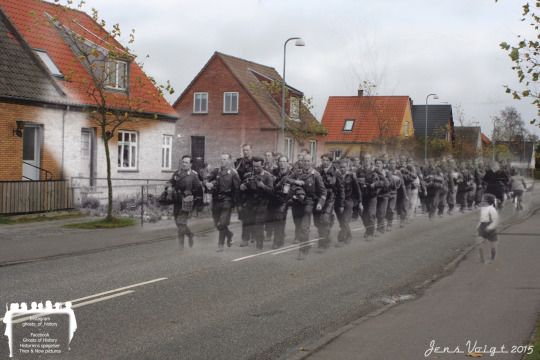
Rønne, Bornholm.
I forbindelse med den tyske kapitulation i Danmark den 4. maj 1945 begav de tyske tropper på Bornholm sig mod Rønne Havn for udskibning til Tyskland de følgende dage. Her ses en deling soldater i godt humør på Åkirkebyvej 5. eller 6. maj 1945.
Billede er også offenligt gjort i bogen, Historiens Spøgelser - Rønne 1940-1946.
Dengang: 5. / 6. Maj 1945, Carl Wilhelm Bidstrup Nu: 11. november 2015, Jens Voigt Samling: Niels Christian Pihl.
With the German capitulation in Denmark on May 5th 1945, german troops on Bornholm headed against the port of Roenne for disembarkation to Germany in the following days. Here a unit of soldiers are seen in a good mood on Aakirkebyvej, 5th or 6th May 1945.
Picture is also made public in the book, Historiens Spøgelser (Ghosts of History) - Rønne 1940-1946.
Then: 5. / 6. May 1945, Carl Wilhelm Bidstrup Now: November 11, 2015, Jens Voigt Collection: Niels Christian Pihl.
3 notes
·
View notes
Text
- In 1906, an unemployed German cobbler named Wilhelm Voigt was suffering from extreme poverty. He had no choice but to steal, but he did not steal in the traditional way, such as robbing a house or a small amount of money... - He got an army commander’s suit from a clothing store... - And he stood in The street and the German army battalion objected on the basis that he was a commander and ordered them to follow him. After that, he ordered them to imprison the governor of a rich province called Köpenick and the commander of its treasury on charges of embezzlement and stole an amount equivalent to tens of millions of dollars, equivalent to today’s money, and disappeared. - The strangest thing is that 9 days later, the police found him and sentenced him to 4 years in prison... - #German public opinion began to put pressure on the police, the government, and the army to get him out, and for the people he became a national hero... as if they were delivering a message instead of imprisoning the man. Do not follow anyone. Someone orders you, the problem is with you.

- في عـام 1906 اسـكافي ألماني عاطل عن العمل أسمه Wilhelm Voigt ويعاني من فقر شديد فلم يجد امامه إلا السرقة، لكنه لم يسرق بالطريقة التقليدية كسرقة بيت او مبلغ تافه ...
- قام بالحصول على بدلة قائد جيش من محل ملابس..
- ووقف في الشارع وأعترض كتيبة جيش ألمانيا على اساس إنه قائد وأمرهم ان يتبعوه وبعد ذلك امرهم بحبس حاكم مقاطعة غنية اسمها Köpenick وقائد خزينتها بتهمة الاختلاس وسرق مبلغ يعادل عشرات الملايين من الدولارات بما يعادل نقود اليوم واختفى.
- الأغرب من ذلك بعدها ب9 أيام الشرطة عثرت عليه وحكموا عليه بالحبس 4 سنوات..
- الرأي العام الألماني بدأ يضغط على الشرطة والحكومة والجيش من أجل ان يخرجوه وأصبح بالنسبة للشعب بطل قومي..
كانهم يوصلون رسالة بدل ان تقوموا بحبس الرجل لا تتبعوا اي شخص يأمركم فالمشكلة فيكم . 👌
3 notes
·
View notes
Text
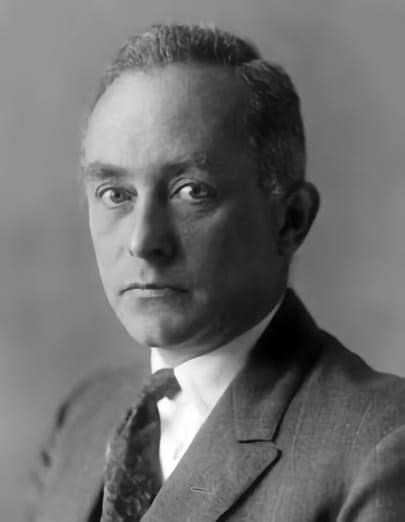
Max Born was born in Breslau #OnThisDay the 11th December, 1882, to Professor Gustav Born, anatomist and embryologist, and his wife Margarete, née Kauffmann, who was a member of a Silesian family of industrialists.
Max attended the König Wilhelm’s Gymnasium in Breslau and continued his studies at the Universities of Breslau (where the well-known mathematician Rosanes introduced him to matrix calculus), Heidelberg, Zurich (here he was deeply impressed by Hurwitz’s lectures on higher analysis), and Göttingen. In the latter seat of learning he read mathematics chiefly, sitting under Klein, Hilbert, Minkowski, and Runge, but also studied astronomy under Schwarzschild, and physics under Voigt. He was awarded the Prize of the Philosophical Faculty of the University of Göttingen for his work on the stability of elastic wires and tapes in 1906, and graduated at this university a year later on the basis of this work.
Born next went to Cambridge for a short time, to study under Larmor and J.J. Thomson. Back in Breslau during the years 1908-1909, he worked with the physicists Lummer and Pringsheim, and also studied the theory of relativity. On the strength of one of his papers, Minkowski invited his collaboration at Göttingen but soon after his return there, in the winter of 1909, Minkowski died. He had then the task of sifting Minkowski’s literary works in the field of physics and of publishing some uncompleted papers. Soon he became an academic lecturer at Göttingen in recognition of his work on the relativistic electron. He accepted Michelson’s invitation to lecture on relativity in Chicago (1912) and while there he did some experiments with the Michelson grating spectrograph.
An appointment as professor (extraordinarius) to assist Max Planck at Berlin University came to Born in 1915 but he had to join the German Armed Forces. In a scientific office of the army he worked on the theory of sound ranging. He found time also to study the theory of crystals, and published his first book, Dynamik der Kristallgitter (Dynamics of Crystal Lattices), which summarized a series of investigations he had started at Göttingen.
At the conclusion of the First World War, in 1919, Born was appointed Professor at the University of Frankfurt-on-Main, where a laboratory was put at his disposal. His assistant was Otto Stern, and the first of the latter’s well-known experiments, which later were rewarded with a Nobel Prize, originated there.
Max Born went to Göttingen as Professor in 1921, at the same time as James Franck, and he remained there for twelve years, interrupted only by a trip to America in 1925. During these years the Professor’s most important works were created; first a modernized version of his book on crystals, and numerous investigations by him and his pupils on crystal lattices, followed by a series of studies on the quantum theory. Among his collaborators at this time were many physicists, later to become well-known, such as Pauli, Heisenberg, Jordan, Fermi, Dirac, Hund, Hylleraas, Weisskopf, Oppenheimer, Joseph Mayer and Maria Goeppert-Mayer. During the years 1925 and 1926 he published, with Heisenberg and Jordan, investigations on the principles of quantum mechanics (matrix mechanics) and soon after this, his own studies on the statistical interpretation of quantum mechanics.
As were so many other German scientists, he was forced to emigrate in 1933 and was invited to Cambridge, where he taught for three years as Stokes Lecturer. His main sphere of work during this period was in the field of nonlinear electrodynamics, which he developed in collaboration with Infeld.
During the winter of 1935-1936 Born spent six months in Bangalore at the Indian Institute of Science, where he worked with Sir C.V. Raman and his pupils. In 1936 he was appointed Tait Professor of Natural Philosophy in Edinburgh, where he worked until his retirement in 1953. He is now living at the small spa town, Bad Pyrmont.
Max Born has been awarded fellowships of many academies – Göttingen, Moscow, Berlin, Bangalore, Bucharest, Edinburgh, London, Lima, Dublin, Copenhagen, Stockholm, Washington, and Boston, and he has received honorary doctorates from Bristol, Bordeaux, Oxford, Freiburg/Breisgau, Edinburgh, Oslo, Brussels Universities, Humboldt University Berlin, and Technical University Stuttgart. He holds the Stokes Medal of Cambridge, the Max Planck Medaille der Deutschen Physikalischen Gesellschaft (i.e. of the German Physical Society); the Hughes Medal of the Royal Society, London, the Hugo Grotius Medal for International Law, and was also awarded the MacDougall-Brisbane Prize and the Gunning-Victoria Jubilee Prize of the Royal Society, Edinburgh. In 1953 he was made honorary citizen of the town of Göttingen and a year later was granted the Nobel Prize for Physics. He was awarded the Grand Cross of Merit with Star of the Order of Merit of the German Federal Republic in 1959.
The year 1913 saw his marriage to Hedwig, née Ehrenberg, and there are three children of the marriage.
Max Born died on January 5, 1970.
2 notes
·
View notes
Text
Birthdays 9.2
Beer Birthdays
J.C. Jacobsen (1811)
Frank B. Haberle (1855)
Five Favorite Birthdays
Jimmy Connors; tennis player (1952)
Salma Hayek; actor (1966)
Billy Preston; rock singer, keyboard player (1946)
Keanu Reeves; actor (1964)
Walt Simonson; comic book artist (1946)
Famous Birthdays
Cleveland Amory; writer (1917)
Hal Ashby; film director (1929)
Arthur Ashkin; physicist (1922)
Romare Bearden; artist (1911)
Georg Böhm; German composer (1661)
Paul Bourget; French writer (1852)
Terry Bradshaw; Pittsburgh Steelers QB (1948)
Lysander Button; engineer (1810)
Marge Champion; actress, dancer, and choreographer (1919)
Jimmy Clanton; pop singer-songwriter (1938)
Ernst Curtius; German archaeologist and historian (1814)
Rosanna DeSoto; actress (1950)
Allen Drury; writer (1918)
Esteban Echeverría; Argentinian poet and author (1805)
Eugene Field; author and poet (1850)
Frank Fontsere; drummer and songwriter (1967)
Henry George; economist (1839)
Israel Gelfand; Russian-American mathematician (1913)
Sam Gooden; soul singer (1934)
Marty Grebb; keyboardist, guitarist, and saxophonist (1946)
Andrew Grove; engineer (1936)
Mark Harmon; actor (1951)
William F. Harrah; businessman, founded Caesars (1911)
Hans-Hermann Hoppe; economist and philosopher (1949)
Hans Jæger; Norwegian philosopher (1854)
Clifford Jordan; jazz saxophonist (1931)
Liliuokalani; Hawaiian queen (1838)
Christa McAuliffe; astronaut, teacher (1948)
Hugo Montenegro; composer (1925)
Grady Nutt; comedian (1934)
Wilhelm Ostwald; Latvian-German chemist (1853)
Linda Purl; actor (1955)
Horace Silver; jazz pianist (1928)
Joe Simon; singer-songwriter (1943)
Frederick Soddy; English chemist (1877)
Albert Spalding; sporting goods businessman (1850)
Bhaktivinoda Thakur; Indian guru and philosopher (1838)
René Thom; French mathematician (1923)
Woldemar Voigt; German physicist (1850)
Tuc Watkins; actor (1966)
Cynthia Watros; actress (1968)
Jack White; rock singer (1975)
Katt Williams; comedian (1971)
John Zorn; saxophonist (1953)
1 note
·
View note
Text
Kalender - Historische Bilder aus Norddeutschland 1983 der Vereins- und Westbank mit den Inhalten:
- Unbekannter Künstler: Blick von der Elbe auf Blankenese mit dem Süllberg und dem Fährhaus, um 1890
- Rudolf Wiegmann: Hannover, der Marktplatz, 1834
- G. A. Jacobsen: Paradeplatz in Rendsburg, 1845
- Carl Weiß: Braunschweig, Andreaskirche mit alter Waage, um 1836
- Friedrich Bernhard Westpfahl: Schleswig - Der Möwenpreis, 1836
- Johann Friedrich Fritz: Die Kupfermühle am 3. Pfingsttage, 1841
- Hermann Kaufmann: Die Heimkehr der Probsteier Fischer
- Johann Friedrich Fritz: Die Erholung der Wyck auf Föhr, 1840/45
- Christian Ludwig Wilhelm Heuer: Helgoland - Grottenbeleuchtung, um 1855/60
- Carl Daniel Voigts: Der Lust und Gast-Ort im Vieburger Holz ohnweit Kiel, 1808
- Christian Ludwig Wilhelm Heuer: Hamburg - Prospekt des Optischen Belwider auf den St. Pauli im Jahr 1827, 1890
- Nikolaus Zimmermann: Wanderer und bettelnde Bauersleute in der Gegend von Göttingen, 1793
- Cornelis Springer: Lübeck, Markt mit Rathaus und Marienkirche, 1870
- Volkslebenbilder
Maße: 32,5 x 29 cm
0 notes
Text

why of course anon!!! i would be happy to fulfill your request which i most certainly did not edit to say exactly what i wanted. (hey, i already did the rest of it. :p)
anyway. to my eternal sadness raiden does not have a lot of healthy relationships in canon and even the ones he does have mostly don’t show up until revengeance. (and people say it isn’t technically canon. IT GAVE HIM FRIENDS. YOU WOULD TAKE AWAY HIS FRIENDS?) [coughs] however he DOES have some and i am going to talk about them now. (some of these are more subjective than others. and some are more ‘potential’ as well. shhh, i can do what i want.) i’ll start with the potentials.
Emma Emmerich
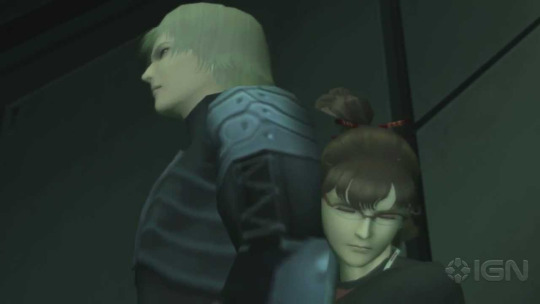
yeah, yeah, i know, she barely existed, but you have to take note of their canon interactions. (i do not consider the interactions they can have if the player chooses to be a jackass to be canon. if i did that things would get insane in so, so many ways.) although they didn’t get much time to get to know each other, what time they do have is bizarrely sweet even under the tense circumstances.
emma is... to put it mildly, enough to try anyone’s patience, although her terror of water in particular is very understandable considering what she’s been through. despite how much she’s slowing him down, raiden is nothing but gentle and kind with her (unless the player chooses to be a jackass, but that one’s on them). he could just knock her out and drag her along, or any other more cruel methods, but he doesn’t. he comforts her and figures out a way for her to get through the water. during all this, she trusts him enough to go along with it, and even opens up a little bit, telling him about her childhood. (she also questions the authenticity of his hair, but let’s be real, with hair that fabulous, who wouldn’t question it?)
they don’t get to interact much, but what interactions they do have are some of the healthiest he has in the entire game. given more time, i think they could have been friends.
Olga Gurlukovich

yeah, this is another complicated ‘potential’ one. although the motivations behind everything are complicated to say the least, she does help raiden, and in the end even sacrifices herself to save him and her child. meanwhile, he tries to keep her from doing so, and is openly horrified and saddened at her death, to the point that that, not any of the awful things he’s been through over the course of the game, is the trigger that finally causes him to completely break down. he also puts in a great deal of effort to rescue her child, who i’ll have a great deal to say about later on in this post. again, had they been given more time, i firmly believe they could have been friends.
(‘why do you forgive her betraying him, but not snake?’ you might ask. easy. she did it for her child, and on top of that, she didn’t spend two entire games treating him like dirt. what actions she took against him were for the sake of protecting her child, and he certainly didn’t hold them against her after that. ‘but he didn’t hold snake’s actions against him, either!’ one of these relationships had hero worship clouding his perceptions. the other didn’t. he had no emotional connection that might make him feel obligated to forgive her, yet he did. i think that speaks volumes.)
Naomi Hunter
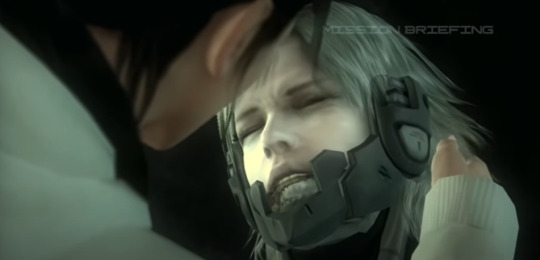
yeah, this one hurts. like... a lot. i’d be remiss if i didn’t point out that the care she shows him is almost certainly due to him being a painful reminder of what her brother went through, but i like to think that she cared about him as his own person as well. either way, she’s one of the only two people in the game to show this much concern for his wellbeing. this is another case of ‘they didn’t get to interact much before she died’ but oh, if they could have.
“Doktor” (Wilhelm Voigt)

okay so this guy’s just a weirdo. but! despite his cluelessness about what NOT to say to a man who has been forcibly used as a test subject for horrible experiments (i’m pretty sure his brain is too full of Science Thoughts to have room for tact), he’s pretty decent to raiden! he shows genuine concern on several notable occasions (when raiden demands he turn off his pain inhibitors while he has a sword shoved through his stomach, when raiden falls from the helicopter) and raiden seems to enjoy talking with him when he’s not being completely bizarre. hell, doktor even gets a smile out of him!
Kevin Washington

we’re getting into the Best Buddies category! woohoo! kevin has some moments where i want to throw rocks at him, but by and large he and raiden get along really well. kevin worries about him when he’s saying or doing concerning stuff, gets on his case in a good-natured manner, and they have some genuinely nice conversations.
N’mani
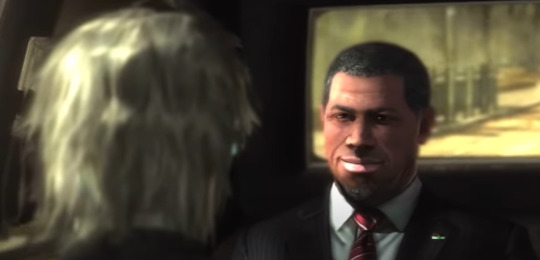
if i’m ever not sad about this one, take that as proof that i’ve officially lost my mind. dear god. the mutual respect and trust between them. the way that he’s the only person in the series to give raiden a nickname, and raiden doesn’t even mind! (well, he does when kevin’s getting on his case about it, but that’s a different sort of scenario.) the amount of guilt raiden feels after his death. the way that he talks about n’mani in general. the fact that they barely actually interact on-screen but you can tell just from the little time they do have that raiden feels comfortable around him in a way that you don’t see often. those few minutes manage to convey that the past three years have been enough to develop a lasting friendship... one that should have lasted much, much longer.
Courtney Collins

yay, courtney! my undisputed favorite of the maverick crew! (you know. aside from raiden.) their friendship is so cute. in this case it’s mostly raiden doing the teasing, but it’s all 100% good-natured and courtney knows it. she doesn’t push raiden’s boundaries, either--any sensitive information discussed is freely offered by him. he’s actually very open about personal information with her, so you can tell he trusts her. and they have some of the funniest conversations--i love when she gets excited about food and he takes genuine interest in what she’s saying. she wins every award for being one of the best friends he has!
George

and now we’re getting into my favorite part of the list: the kids! the way raiden absolutely transforms when talking to george really just says so much. he’s barely met the kid and he’s already attached, to the point that when he hurts george in the process of trying to save both him and the countless other kids in the lab, he’s crushed by guilt despite not only saving george’s life but even making him happier with it! and george is just as attached to him--absolutely in awe of the ‘robot-ninja-man’. people seem to find george annoying, but i don’t get it. how can you find him annoying when his first line is seeing raiden and making a teenage mutant ninja turtles reference? that’s fucking adorable.
still... for the sake of his sanity, i hope raiden never finds out about the whole ‘hot for days’ thing. that’d just be painfully awkward for everyone involved.
John

it is time for the most important healthy relationships in raiden’s life: HIS FAMILY!!! LOOK at him and his son. this scene practically brings me to tears because he’s so happy and i’m so happy for him and i think we should have had more content with the two of them because they are so important. i love when raiden talks about him in revengeance. he is such a good dad. and john thinks he’s the coolest... he has a little toy sword... they’re everything to me
Sunny Emmerich




i can’t put in just one picture of her. i can’t. i am physically incapable. because this, this right here is my favorite relationship raiden has with anyone. he saved her. he protected her. and when she got the chance she did the same for him. she stood up to solid snake in order to protect him. she supported him when no one else would. he asked her for permission to go and fight. he apologized to her before cutting off his own arm because he knew she didn’t want him to get hurt. he was so proud of her for working at solis. she dropped everything to help him. she couldn’t stop smiling talking to him. he gave her the softest and most genuine smile in the entire game. he talked to her so comfortably and casually. he even got on her case a little. she encouraged him and got upset when he got hurt. he reassured her. ‘come on. let me see a smile.’
they’re siblings, okay? i don’t care what anyone else says, i don’t give a single fuck, if you think they don’t love each other then you weren’t paying attention. they’re family. that’s a fact. and if you disagree then you’re just objectively wrong. now you know.
14 notes
·
View notes
Text
Richard Jacob Weissgerber 1923

Richard Jacob Weissgerber 1923 masterbuilt romantic guitar - a fine built guitar! Richard Jacob Weissgerber was born in Markneukirchen, Germany in 1877 into a guitar-making family and spent his childhood years surrounded by his father's richly decorated instruments and also under the supervision of the master violin maker Christian Wilhelm Seidel. In his teenage years, he trained and apprenticed as a zither maker then assisted with guitar maker Wilhelm Voigt for six years. With this deep background, in 1905 Richard Jacob set up his own independent guitar workshop. Early in his career, Richard Jacob had "Weissgerber" patented as a trade name, which allowed him to freely innovate and create new designs into his guitar making. It seems at the outset, he built largely in the popular Viennese style but eventually began to design and develop new models with unusual forms and decorations that were always exquisitely finished - this gave his instruments a competitive edge which made them standouts in the busy guitar-making city of Markneukirchen. He traveled extensively through Germany and Austria to accumulate knowledge of all the various guitar making styles that were being used and became actively involved with the "Guitar Movement" ("Gitarristische Bewegung") in Germany, maintained intensive contact with the International Guitar Association (Internationaler Guitarrenverband) and to many important guitarists. Read the full article
9 notes
·
View notes
Text
The Bromacker Project Part V: Orobates pabsti, Pabst’s Mountain Walker
In 1995, my first year of field work at the Bromacker quarry, Stuart Sumida discovered a fossil that we initially thought was that of the amphibian Seymouria, based on the size and shape of the exposed vertebrae. This tentative identification made sense, because before our collaboration began, Thomas Martens had discovered in the Bromacker a skull of Seymouria, a creature known from localities in the USA. Months later, while I was preparing the specimen, Dave Berman and I realized the fossil wasn’t Seymouria, and that it belonged to the same unnamed animal that Thomas had collected a partial skeleton of before our collaboration began.

Specimen of Orobates pabsti collected in the 1995 field season. We determined that it is a juvenile. Photo by Dave Berman.
In the 1998 field season I discovered a third specimen, which is by far the most spectacular fossil that I have ever discovered. I found it towards the end of the field season when I pried up a piece of rock from the quarry floor. Upon turning over the rock piece, I saw an articulated foot preserved in it. I couldn’t believe my eyes! I knew that at the Bromacker if an articulated foot was found, the rest of the articulated skeleton should be attached to it. The problem was, we didn’t know if I had discovered a front or a hind foot, so we weren’t sure how the specimen was oriented in the quarry and whether it penetrated the nearby rock wall. Dave carefully lifted another piece of rock and thought the bones exposed in it were part of the shoulder girdle. Unfortunately, closer examination revealed that it was a piece of skull roof—another lobotomy—but, lacking x-ray vision, this is how we find fossil bone at the Bromacker. The good news was that the fossil specimen appeared to parallel the quarry wall.

A film crew from the regional MDR television station visited us early on the day of my discovery to interview Dave and Thomas. The discovery was made after they left, so Thomas immediately notified them. They returned and recorded a reenactment of my discovery. The piece of rock I am holding contains the foot. The rest of the fossil lies in the low mound of rocks in front of me. Photo by Dave Berman, 1998.

Dave and Stuart finish plastering the block. The red flag is a north arrow to indicate the orientation of the block in the quarry. Photo by the author, 1998.
Dave, Stuart, Thomas, then-graduate student Richard Kissel (University of Toronto, Mississauga), and I named the animal Orobates pabsti, which is from the Greek “oros,” meaning mountain, and “bates,” meaning walker, in reference to the Bromacker fossil environment being an intermontane basin. “Pabsti” is in honor of Professor Wilhelm Pabst for his pioneering work on the Bromacker fossil trackways.
We determined that Orobates is very closely related to Diadectes, and like Diadectes, was herbivorous. Orobates differs from Diadectes and other diadectomorphs in the group Diadectidae in a number of features, some of which are as follows: spade-shaped cheek teeth that are oriented on the jaw at an angle of 30–40° to the jaw line, rather than being close to 90°; narrower and shorter vertebral spines; 26 vertebrae between the head and hip (Diadectes has 21); proportions and shapes of individual toe bones; and digit (finger or toe) length.

Holotype specimen of Orobates pabsti, the specimen collected in 1998. If a series of specimens exists of a new species, then the specimen that best represents the species is designated as the holotype. If only one specimen is known, it becomes the holotype by default. Photo by Dave Berman.
The Bromacker has long been famous for its exquisitely preserved fossil trackways. Identification of the particular fossil animal that made a given trackway is almost always very difficult, because body fossils often lack completely preserved hands and feet and typically are not found in association with trackways. As a result, trackways are given their own set of names, called ichnotaxa (“ichno” means track or footprint), which are typically referred to major groups of animals instead of individual species. The Bromacker is unique, however, because nearly completely preserved body fossils occur in a rock unit above the trackways, indicating they are very nearly contemporaneous. Five ichnotaxa are known from the Bromacker, and one of them, Ichniotherium, has been attributed to Diadectidae.

A large slab of rock being inspected for trackways shortly after it was unearthed in the commercial rock quarry. The polygonal patterns in the rock are mudcracks. Photo by the author.
Graduate student and trackway expert Sebastian Voigt (now Director at Urweltmuseum GEOSKOP, Burg Lichtenberg, Germany) often visited us at the Bromacker. In 2000, a time when Diadectes was the only known Bromacker diadectid, Sebastian and his advisor Hartmut Haubold (now emeritus at Martin Luther University Halle-Wittenberg, Germany) proposed that Ichniotherium cottae made two track types, designated as A and B, that differed according to the speed at which the trackmakers moved. This contrasted previous studies that proposed three species of Ichniotherium at the Bromacker.
Once the skeletal anatomy of Orobates became known, Sebastian realized that there were two species of Ichniotherium, and they were made by Diadectes and Orobates, respectively. He invited Dave and me to co-author a paper to present this hypothesis. We supplied Sebastian with information about skeletal differences between Diadectes and Orobates, and Sebastian used these data to firmly establish that Diadectes made Ichniotherium cottae (type B) tracks and Orobates was the trackmaker of trackways formerly identified as I.sphaerodactylum (aka I. cottae type A). Even though the makers of the trackways are now known, the ichnotaxon names are still used when referring to the trackways.

Photographs of trackways of Ichniotherium sphaerodactylum made by Orobates pabsti (top) and Ichniotherium cottae made by Diadectes absitus (bottom). Modified from Voigt (2007).
In Diadectes, the fifth digit of the hind foot is relatively shorter than it is in Orobates, which can be seen in the tracks of I. cottae and I. sphaerodactylum, respectively. Furthermore, in I. cottae trackways, the hind foot track overlaps the track of the front foot, whereas in I. sphaerodactylum the hind foot track typically doesn’t overlap the front foot track. This is because Diadectes has less vertebrae between the head and hip (21 vertebrae) than Orobates (26 vertebrae) does.

Front and hind foot track pair of Ichniotherium sphaerodactylum. Track made by the front foot is above the hind foot track. Digits 1–5 indicated. Modified from Voigt, 2007.

Front and hind foot track pair of Ichniotherium cottae. Track made by the front foot is above the hind foot track. Digits 1–5 indicated. Notice that the hind foot track overlaps the front foot track. Drawings are of different specimens than the one photographed. Modified from Voigt, 2007.
A cast of the holotype skeleton of Orobates pabsti is exhibited in the Fossil Frontiers display case in Carnegie Museum of Natural History’s Dinosaurs in Their Time exhibition. Be sure to look for it once the museum re-opens. And stay tuned for my next post, which will feature the amphibian Seymouria sanjuanensis.
For those of you who would like to learn more about Orobates, you can access the abstract here or contact Amy Henrici here. The publication on the track-trackmaker association can be found here.
Amy Henrici is Collection Manager in the Section of Vertebrate Paleontology at Carnegie Museum of Natural History. Museum staff, volunteers, and interns are encouraged to blog about their unique experiences and knowledge gained from working at the museum.
#Carnegie Museum of Natural History#Bromacker Quarry#Orobates#Paleontology#Vertebrate Paleontology#Orobates pabsti#Fossils
17 notes
·
View notes
Text
Fact: Friedrich Wilhelm Voigt, known as The Captain of Köpenick, was a XIX century Prussian shoemaker and ex-convict. He became a symbol of anti-militairsm and a famous pop-cultural figure after - in 1906 r. - he managed to impersonate a Prussian officer.
He collected the whole uniform from different shops, dressed up and “went to the local army barracks, stopped four grenadiers and a sergeant on their way back to barracks and told them to come with him. Indoctrinated to obey officers without question, they followed. He dismissed the commanding sergeant to report to his superiors and later commandeered six more soldiers from a shooting range.“ (wikipedia)
He then took all those soldiers to Köpenick (back then a small town near Berlin) and ordered them to arrest the Mayor. When they did, he "confiscated" all the cash from the town hall and simply escaped. He was later apprehended but had a happy ending, as he got pardoned by Wilhelm II. It is said that the emperor himself was amused but also considered this incident to be a sign of incredible Prussian discipline and that it was something to be proud of (the discipline, not the theft). But many Germans and the rest of the world did not agree and the whole incident made Prussia a laughingstock of Europe. Headcanon: I don't really have one, I just think it's hilarious and a great example of how Prussia's biggest virtue - his discipline and obedience - also is his biggest flaw. Of course, many of his brothers and sisters, other Germany's lands, laugh at this so much they cried, and so did some European countries who read about this whole humiliation. Prussia was incredibly embarrassed, angry and felt humiliated. Even today he gets pissy when The Captain of Köpenick is mentioned - this is because even tho Prussia has a pretty mean sense of humor and likes to make fun of others, when someone makes fun of him he takes it quite badly and he is not into self-deprecating humor at all.
Germany also used to be embarrassed, but now - after he stopped viewing himself as Prussia's extension - kinda thinks it's funny too :D.
#hws prussia#aph prussia#hetalia#historical hetalia#gilbert beilschmidt#hetalia headcanons#aph#Axis Powers Hetalia
35 notes
·
View notes
Photo

EMMETT LEO KELLY
On this day of 9th December, Emmett Leo Kelly (December 9, 1898 – March 28, 1979) was born in Sedan, Kansas, USA.
He was a circus performer, who created the clown figure "Weary Willie", based on the hobos of the Great Depression in the 1930s.
Kelly appeared in Oscar winner for Best Picture "The Greatest Show on Earth.” a TV adaptation of the story of Wilhelm Voigt, the "Captain From Kopenick,” a Mystery Guest on the broadcast of What's My Line?, portrayed the character "Bigamy Bob" in the film Wind Across the Everglades and, starred in the musical “The Clown and the Kids”.
On July 6, 1944, Kelly was preparing to perform in a matinee show of the Ringling Brothers Circus for an audience of 6,000 in Hartford, Connecticut. Twenty minutes into the show, the circus tent caught fire. Kelly was among those who acted quickly to help extinguish the fire, and then he helped panicked audience members—mostly women and children to swiftly exit the tent. Officially, 168 people died, and 682 people were injured.
Kelly's actions that day were immortalized by audience member Ralph Emerson, who took a photograph of Kelly rushing toward the burning tent in his full clown make-up and costume, carrying a single bucket of water. The photograph was published in Life on July 17, 1944. According to eyewitnesses, Kelly was seen to be crying.
The fire affected Kelly deeply and for the remainder of his life; according to his grandson, Joey Kelly, he "rarely spoke of the fire to anyone other than family”.
Kelly's boyhood town of Houston, Missouri, named Emmett Kelly Park in his honor and hosted an annual Emmett Kelly Clown Festival, which attracted clowns from across the region. The festival ended its 21-year run in May 2008.
The Emmett Kelly Museum is located in Sedan, Kansas.
Kelly was an inaugural inductee to the International Clown Hall of Fame in 1989, into the International Circus Hall of Fame in 1994, and into the Hall of Famous Missourians in 1998, and a bronze bust depicting him is on permanent display in the rotunda of the Missouri State Capitol.
Emmett Kelly died of a heart attack and is buried in the Rest Haven Memorial Park, in Lafayette, Indiana.
2 notes
·
View notes